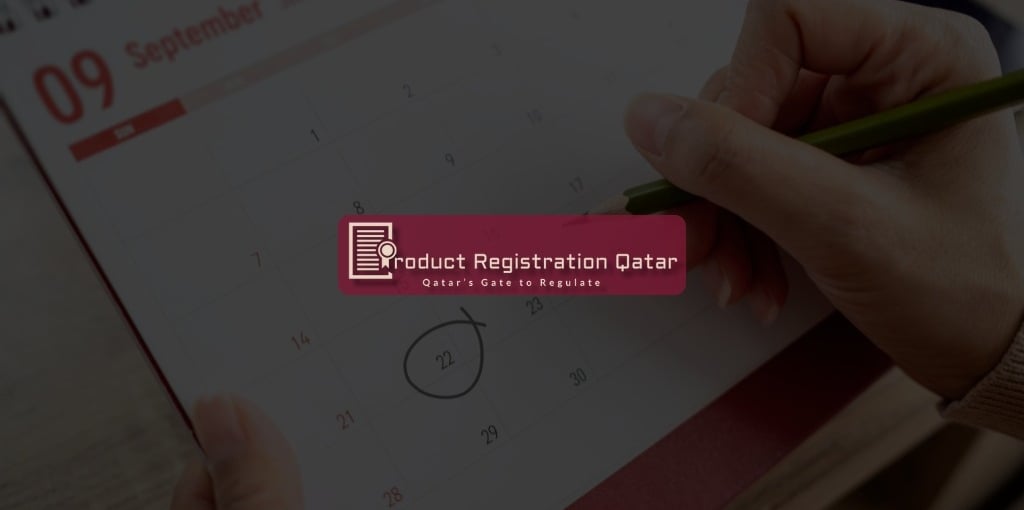MoPH Registration Renewals in Qatar: Deadlines & Triggers
Don’t let approvals lapse. MoPH Registration Renewals in Qatar covers what expires, re-evaluation triggers, and risks—so shipments keep moving without holds.
BLOGS
10/13/20254 min read


MoPH Registration Renewals in Qatar:
Deadlines, Triggers & How to Avoid Lapses
Approvals are not forever. In Qatar, MoPH registration renewals determine whether your product can continue to be imported, sold, and promoted without disruption.
This guide focuses on what actually expires, the hidden triggers that force re‑evaluation, and the practical checks that keep approvals live—without turning this into a DIY manual.
What Actually Expires (and When)
Approval validity varies by category. While the exact periods are defined by product type and approval pathway, the operational reality is that multiple supporting documents will reach their own expiry dates before or at renewal:
Certificates of Free Sale (CFS) and Certificates of Analysis (CoA) expire or become out‑of‑scope when the product, pack size, or manufacturing chain changes.
Letters of Authorization/Power of Attorney (LoA/PoA) are often time‑bound; MoPH expects current legalized documents covering the submitting party.
Test reports & stability evidence age out; shelf‑life justifications must still match label claims and storage conditions.
Arabic artwork versions—once updated on pack—must align with the dossier on record; outdated versions create inconsistencies at renewal.
Bottom line: Renewals are not just a date on the portal; they’re a dossier refresh in which every dependent document must still be true.
Hidden Triggers for Re‑Evaluation (Even if Not at Expiry)
Renewal isn’t the only time MoPH looks again. The following change events can trigger a new review or additional evidence requests:
Label edits (claims, allergen statements, net quantity declarations) and GTIN/pack‑size changes that affect traceability.
Formula tweaks (actives, flavors/sweeteners) or manufacturer/site switches—including secondary packers.
New importer/distributor appointments or portal role changes that break dossier continuity and notifications.
Treat each change as a mini renewal: check evidence, synchronize labels and GTINs, and file a variation before the renewal clock runs out.
Why Lapses Hurt (Real Risks)
Customs holds despite past approvals. If the approval period or supporting documents lapse, shipments can be detained.
Re‑testing and re‑labeling demands. Stale stability data or misaligned artwork leads to extra testing or emergency relabeling.
Commercial disruption. Buyers may delist products if approvals are not demonstrably current.
Inventory write‑offs. In‑market stock may require stickering, withdrawal, or destruction when claims or labels drift from the approved version.
Proactive renewal planning protects revenue and regulatory credibility.
Renewal Readiness Checklist (What to Review, Not How to File)
Use this pre‑renewal review to confirm your dossier is still accurate:
Approval/Document Calendar: Confirm approval end dates; map CFS/CoA, LoA/PoA, and test report expiries 90–120 days in advance.
Label–GTIN–Portal Sync: Ensure Arabic copy, claims, pack sizes, and GTIN/SKU mappings match both the label and the dossier.
Evidence Currency: Verify that stability, CoA, and manufacturing declarations still substantiate shelf‑life and claims.
Change Log Review: Reconcile every label, formula, pack, or site change since last approval; decide variation vs. straight renewal.
Roles & Access: Check that the registrant/submitter still receives portal notifications and that the brand owner retains admin visibility.
If any element fails these checks, address it before starting the renewal submission.
How We Keep You Live (Service‑Led)
We manage renewals as a controlled program—not a last‑minute upload:
Renewal calendar & alerts tied to approvals and document expiries.
Dossier refresh: reconcile labels, GTINs, claims, and evidence; retire outdated versions.
Variation triage: identify what requires a change filing vs. simple renewal; prepare CFS/CoA/stability addenda where needed.
Advocacy & query handling: respond to MoPH questions quickly; escalate when critical shipments are at risk.
Transition plans when switching importer/distributor or AR to avoid gaps in notifications and legal standing.
Approvals nearing expiry? We’ll audit your dossier, refresh evidence, and file renewals so shipments don’t stop.
Frequently Asked Questions (FAQs)
How early should I start a renewal in Qatar?
Begin the document and artwork review 90–120 days before expiry to allow for legalization, testing updates, and any required variations.
Do minor label tweaks affect renewal?
Yes. If the on‑pack text or GTIN differs from the approved dossier, expect questions or a request to file a variation before renewal proceeds.
Can I renew with expired LoA/PoA or CFS?
No. MoPH expects current, legalized documents; outdated evidence is a common reason for holds or rejection.
What if we change importer or distributor near renewal?
Plan a role transition first (permissions, LoA/PoA, portal relinking), then file renewal; otherwise notifications and submissions can break.
Recommended Reads
Post‑Approval Variations in Qatar: Labels, Formulas & Roles
Know when changes are mandatory and how to file them without causing holds.MoPH Portal in Qatar: Account Setup & Role Errors
Avoid delays by assigning permissions correctly and keeping admin visibility.Top 7 MoPH Product Rejection Reasons in Qatar
Learn the recurring mistakes that cause refusals and how to prevent them.See which forbidden product claims in Qatar trigger rejection
& safer ways to position your product.See what really drives product registration costs in Qatar
fees, testing, and hidden multipliers—so you can avoid rework.
Final Thoughts
Renewals are where regulatory discipline pays off. Treat every label, GTIN, and evidence update as part of a single living dossier, and start early.
If timelines are tight or changes stack up, involve a renewal team that can align documents, manage variations, and keep customs clearances uninterrupted.
Approvals nearing expiry?
Contact us or use the chatbot in the bottom-right—our team will audit your dossier and manage renewals before lapses.
Ready to Ensure Your Product is Fully Compliant?
Fill out the form below and let our experts guide you through label checks, formula validation, and registration—step by step.


